How to choose a place for a well for water and do not
It is difficult to imagine a country house or a fertile dacha without a permanent source of fresh water. Practice shows that, even with a central water supply system, many prefer to have an independent source.
Such preferences are caused by the fact that many dacha plots receive water for irrigation strictly by the hour, the water supply systems of the suburban private sector very often do not work due to accidents, and the water quality from the central water supply does not compare with the water from the well, this is a fact.
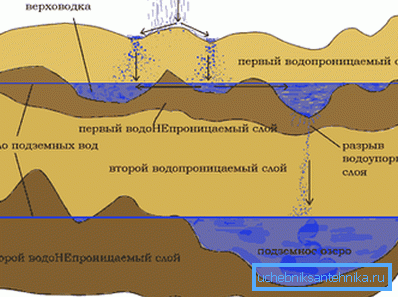
The very first task that arises from the owner of the site is to determine a suitable place for drilling a well. Usually for these purposes attract professionals from private companies that are engaged in drilling. The presence of a certain experience in this case is necessary, since many different factors must be taken into account when choosing a place.
It happens that there are no aquifers in the wide and accessible areas and it often happens that a well in an inaccessible place is the only way out, but if you have modern equipment, you can drill a mine anywhere.

How to determine the location for the well
Choosing a place for a future well, it is necessary to determine the location of the aquifer by analyzing such indicators as:
- soil type and its features;
- the presence of vegetation in the search area;
- general relief of the local surface;
- the presence and amount of surface water and nearby water bodies;
- possible sources of pollution nearby;
- access to the place of work.

Companies that provide drilling and geological exploration services usually have at their disposal topographic maps and geological reports of the area in which they operate. An important role is played by the presence of similar wells or boreholes from neighbors in the area, which significantly speeds up the determination of the drilling site.
Type of soil and its features
Since the important indicators are not only the quantity but also the quality of the water produced, the type of soil can give approximate answers to these questions.
For example, pebble and sandy soil in most cases contain a large amount of water, but here the layer thickness and graininess play a role.

Tip! Choosing a place for a well in such a ground will not allow the use of a screw for drilling, since the sand walls of the mine will constantly be sprinkled, and the pebbles are very difficult to extract with the help of the screw, and even with their own hands.
- It is also important to remember that the depth of the well in sandy or caked soil should be at least 4 meters, since these types of soil have a large capacity and poorly filter the liquid, as a result, surface water will enter the aquifer and will become unsuitable for drinking.
- Clay or muddy soil, despite the high humidity, has a very small capacity and the replenishment of water in such a well will be very slow.
- Sandstone, limestone or quartz contain large reserves of water only in places of geological faults of the rock. These quickly fill with water, but drilling with a screw in these layers is impossible.
Presence of vegetation at the drilling site
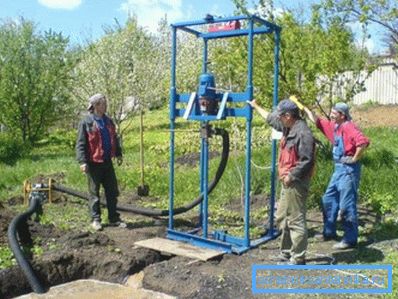
High occurrence of groundwater can be determined visually by the presence of dense and succulent vegetation. It is important to remember that annual seasonal plants in the form of grass and ferns are not an indicator, as they can feed moisture from the upper layer in the form of natural sediments or dew.
In such cases, you need to look for a large cluster of perennial vegetation, such as broad-leaved trees or shrubs, whose root system goes several meters deep.
These plants include:
- cedar rocks;
- willow species;
- ate;
- coltsfoot, dream, sedge;
- alder, birch.

Terrain
Usually the aquifer under the ground repeats the surface relief of the area, however, it is better to choose a place for drilling a well in its lower part. Lowlands should not be subject to flooding during heavy rainfall or melting winter snow.
The presence of a large aquifer is indicated by abrupt longitudinal variations in the terrain, but usually with abundant vegetation it is extremely difficult to spot them with an inexperienced eye.
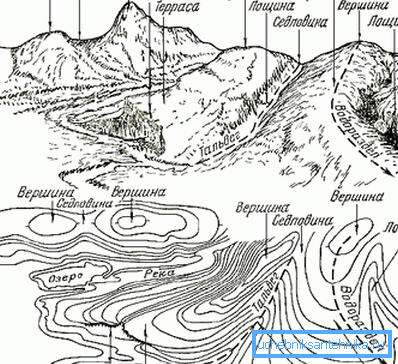
The presence of nearby water bodies and sources of pollution
If in the immediate vicinity of the site there is a natural reservoir in the form of a river or lake, then it is likely that an abundant aquifer can be found at any point of your site, however, the distance from the reservoir and the type of soil play a role.
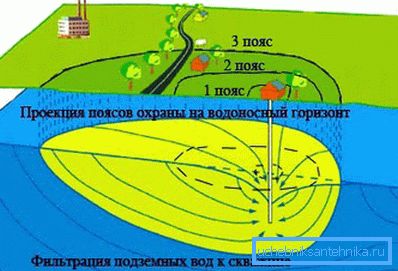
For example, sandy soil is an excellent natural filter, and a well 15 meters from the shore can produce clean and cold water in large quantities. The clay soil is characterized by poor cleaning ability and the choice of a place for a well close to the river is unacceptable, since dirty water from the reservoir will fall into the spring.
It is worth paying attention to the presence of nearby polluting factors, such as:
- dump,
- industrial enterprises;
- cesspools or drain holes;
- sewage systems;
- cattle farms.
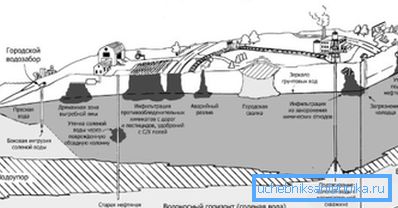
If such sources of pollution are on a higher level than your site, then the probability of waste entering the upper layers of groundwater is extremely high. In such cases, it is recommended to use an artesian well with the deepest possible shaft of the shaft or to regularly examine the water from the upper layer.
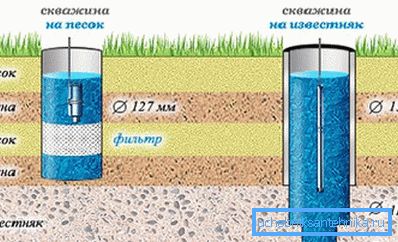
Conclusion
In most cases, to determine the location of the drilling of a well, specialists are called who, with the help of high-precision equipment and topographic data, carry out reconnaissance of the area and determine the aquifer, however the price of such a service is rather big.
Many companies mainly use drilling rigs mounted on the basis of trucks, and do not drill wells in hard-to-reach places. However, today compact installations have appeared on the market that allow you to install a well almost anywhere.
Device wells in the garden - it is not easy, but absolutely necessary. We hope that our instruction and video in this article will be useful to you.